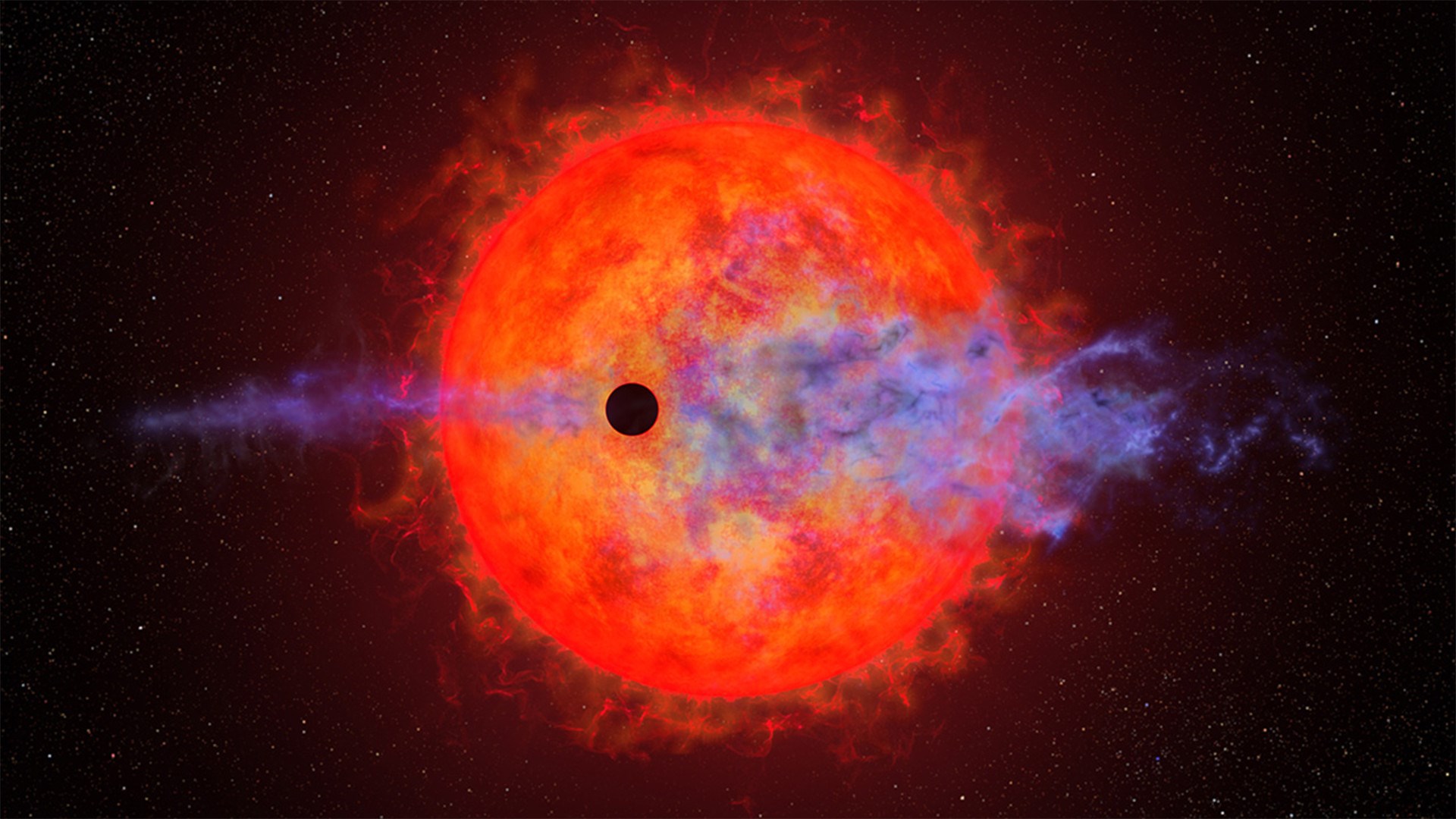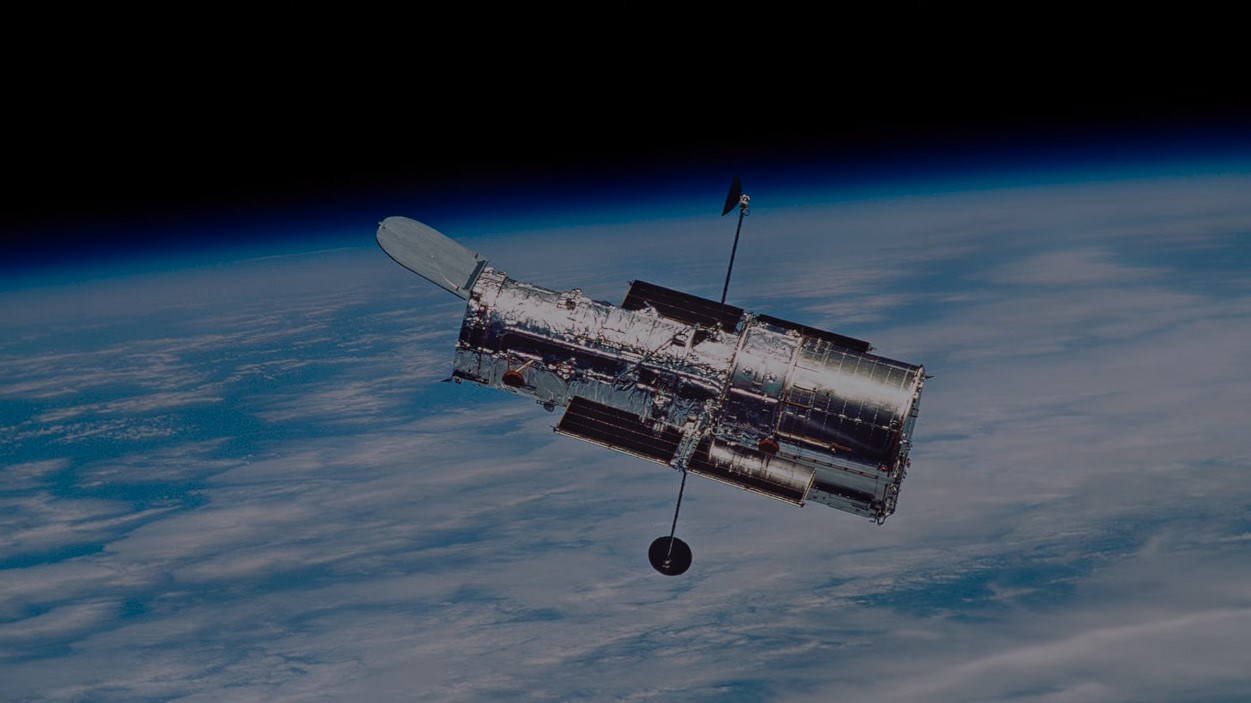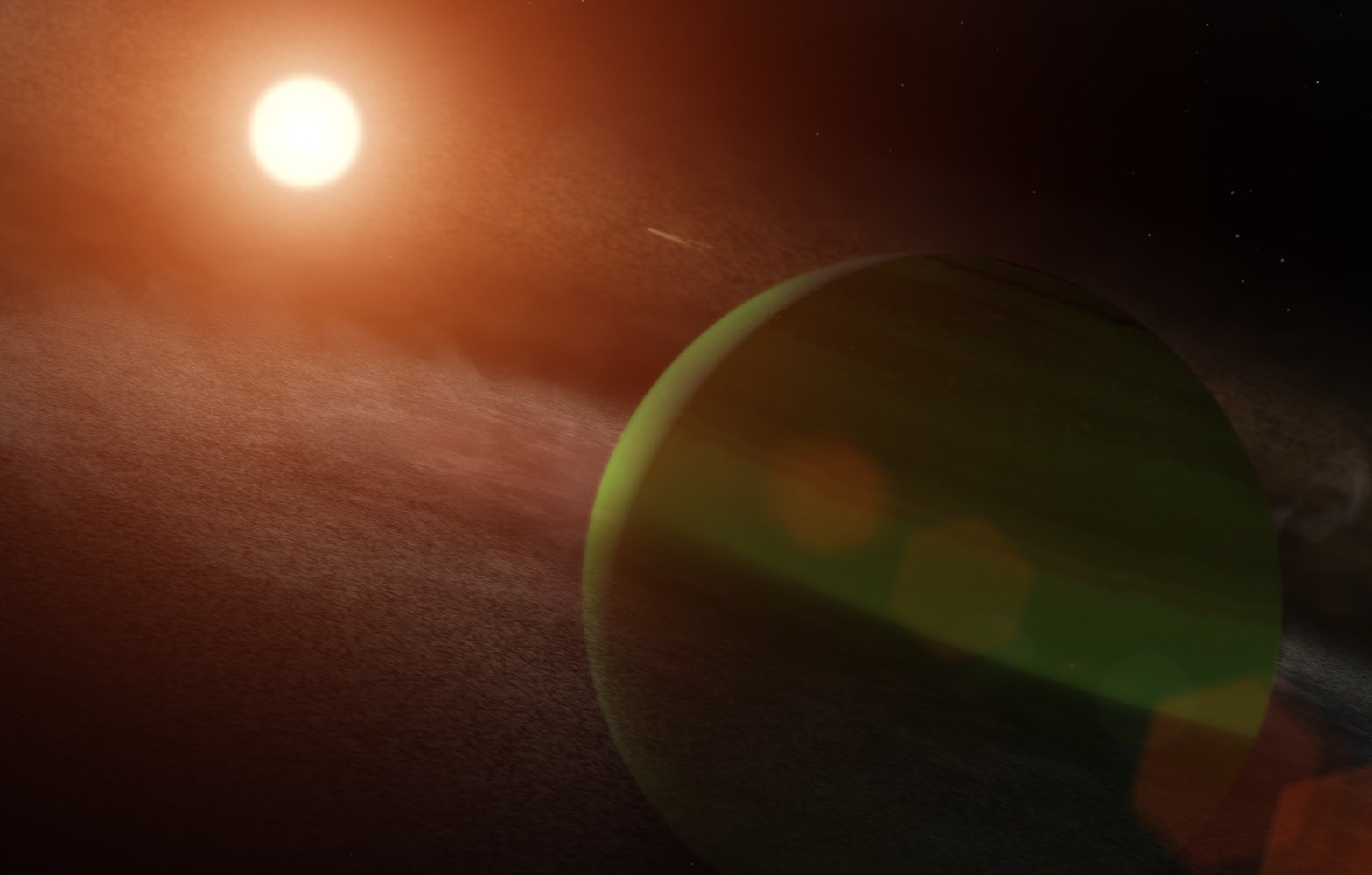 Located about 32 light-years from Earth, a young planet exhibits dynamic changes in its atmosphere as it orbits its parent star. The Hubble Space Telescope made this fascinating discovery while observing the planet orbiting an extremely active red dwarf star, AU Microscopii (AU Mic).
Located about 32 light-years from Earth, a young planet exhibits dynamic changes in its atmosphere as it orbits its parent star. The Hubble Space Telescope made this fascinating discovery while observing the planet orbiting an extremely active red dwarf star, AU Microscopii (AU Mic).Dynamic atmospheric changes in a short time
Initial observations by Hubble noted that the young planet, originally designated AU Mic b, appears to be stably maintaining its atmosphere. But follow-up observations about a year and a half later brought to light “clear signs of atmospheric loss” the planet was experiencing. The observations showed that the violent winds of the host star had virtually stripped the planet’s hydrogen atmosphere. So this sharp variation in atmosphere loss between orbits has puzzled scientists.
 “We’ve never seen atmospheric escape go from completely undetectable to very detectable in such a short time as a planet passes in front of its star,” said Keighley Rockcliffe of Dartmouth College. I thought,” he said.
“We’ve never seen atmospheric escape go from completely undetectable to very detectable in such a short time as a planet passes in front of its star,” said Keighley Rockcliffe of Dartmouth College. I thought,” he said.Possible reasons behind atmospheric variability
Discovered by NASA’s Spitzer and TESS (Transiting Exoplanet Survey Satellite) space telescopes in 2020, AU Mic b was orbiting a young star called AU Microscopii, 23 million years old. Rotating 9.6 million kilometers from its star – or one-tenth of Mercury’s distance from our Sun – AU Mic b completes one full revolution in 8.46 days.
All planets with atmospheres lose some gas as they orbit their stars; This process is known as atmospheric escape. This can happen either subtly like Earth or dramatically like AU Mic b. But scientists had never before seen atmospheric escape stop and start between orbits, the researchers published in The Astronomical Journal.
 “One possible explanation for the hydrogen lost during one of the planet’s transits is that a powerful stellar explosion seen seven hours ago may have photoionized the escaping hydrogen to the point where it became transparent to light, and therefore cannot be detected,” the statement said. In other words, the great activity experienced in the star during the first observations may have prevented the hydrogen loss from being observed.
“One possible explanation for the hydrogen lost during one of the planet’s transits is that a powerful stellar explosion seen seven hours ago may have photoionized the escaping hydrogen to the point where it became transparent to light, and therefore cannot be detected,” the statement said. In other words, the great activity experienced in the star during the first observations may have prevented the hydrogen loss from being observed.The authors offer another possible explanation for this peculiar behavior, suggesting that extreme stellar wind may be shaping planetary outflow. As a result, the atmosphere is observable at times, but not by Hubble at other times.
red dwarfs
Red dwarf stars like AU Microscopii make up the majority of stars in our galaxy. These stars are significantly cooler and less massive than the Sun. Seventy percent of all stars, including Proxima Centauri, the closest star to the Sun, are believed to be red dwarfs. Space scientists have long hypothesized whether such stars could lead to the formation of potentially habitable worlds in their own systems.
Young red dwarfs, however, are extremely active, often bombarding planets orbiting close to the star with charged particles, stripping them of their atmospheres. These small but hard structures reach their most severe levels in the first 100 million years of their lives, especially as in AU Microscopii. Habitability may not be sought for AU Mic b, but an in-depth study of these processes can answer the question of which systems, planet formations and orbits to search for habitable planets.